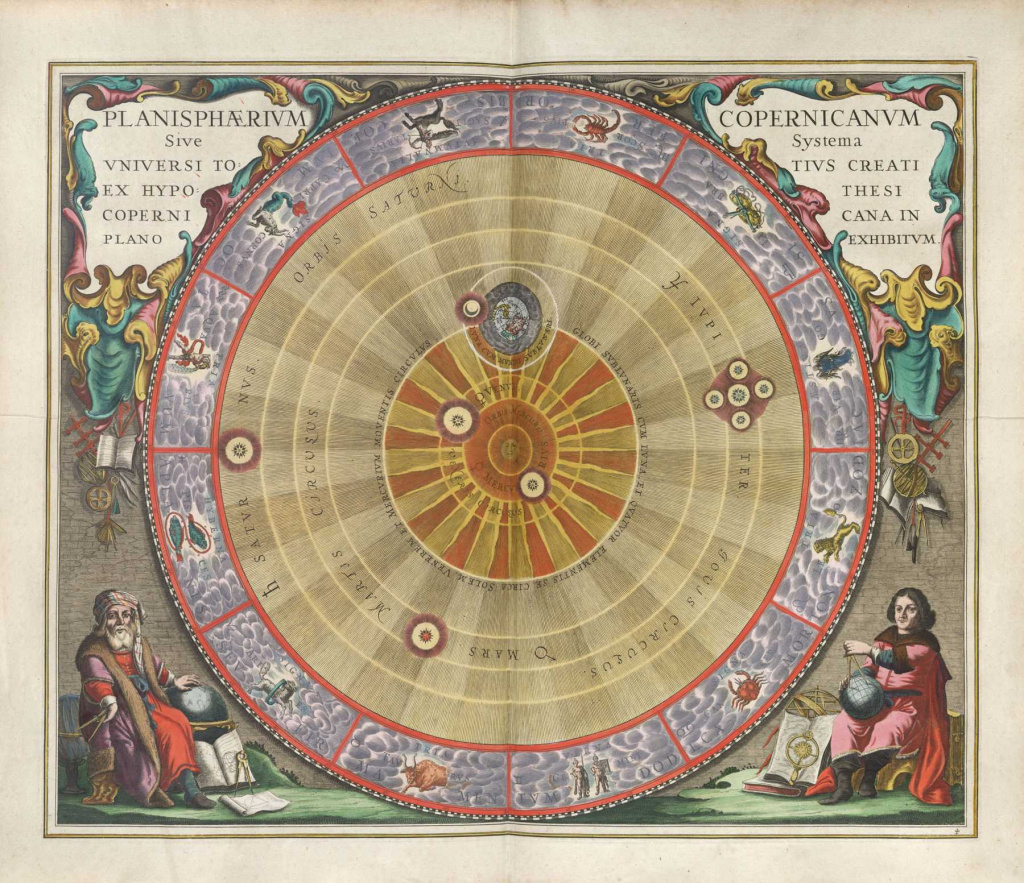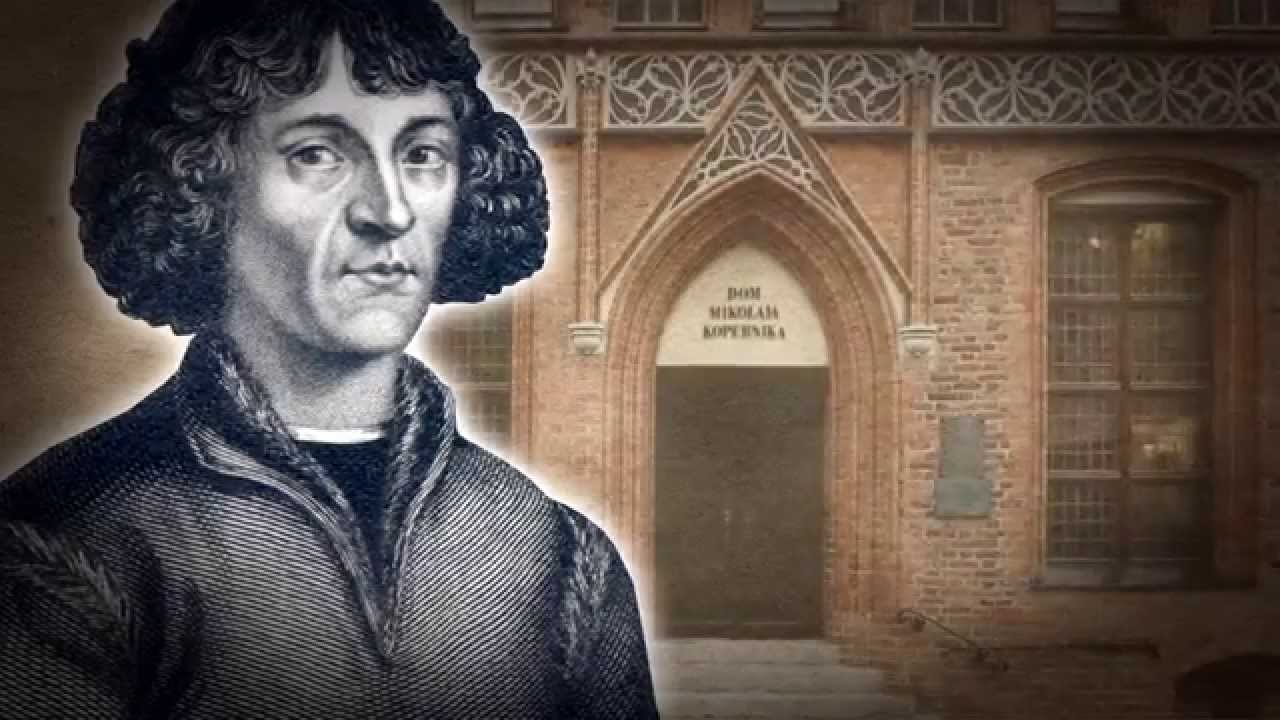
I continue the theme of the history of the popular science genre with one well-known story. True, its most widespread version does not quite accurately reflect real events. In general, let's remember about Copernicus, Galileo and some episodes of the popularization of heliocentrism.
So, as we were taught in school (it was in the 1980s, but I strongly doubt that the essence has changed a lot).
For many centuries people thought that the Earth was in the center of the universe, and all celestial bodies revolve around it. This theory was actively promoted to the masses by the Christian Church. Then the great scientists Nicolaus Copernicus was born, who proved the opposite - the Earth revolves around the Sun, like the rest of the planets. The most enlightened of his contemporaries took this idea with a bang, but were persecuted by the Vatican: Galileo was imprisoned, Giordano Bruno was generally burned. And only many years later, the church was forced to come to terms with scientific truth and stop persecuting the supporters of Copernicus.
Needless to say, the story is tragic. But if you dig deeper, it will turn out even more interesting, and in some ways even more instructive. If you are not interested, then you can not read further.
So, in the courtyard is the "suffering Middle Ages" and its geocentric system of the universe . More precisely, not quite his - this system was invented by the ancient Greeks .
Its supporters were Aristotle, Pliny the Elder and other respected people. Then the astronomer Claudius Ptolemy compiled ideas about the structure of the universe, which had developed by that time (II century BC, by the way) in ancient civilization. And he presented the results in the book "Almagest". Interestingly, all of them from the point of view of Christianity were pagans.Why am I paying attention to this. But because medieval scholars and clerics perceived this system precisely as a basic scientific theory (besides, it was well combined with the postulates of the Bible), and not one of the dogmas of faith. Accordingly, the supporters of heliocentrism were perceived as erring, but not heretics . At that time, the difference was fundamental.

Copernicus himself was not just a faithful parishioner of the Roman Catholic Church. And the whole secretary of the Warmia bishop (this is in Poland), but also his beloved nephew. Having successfully studied at several universities, he, under the patronage of his uncle, made a good spiritual career in the Warmia diocese. And as a man of versatile talents, he was noted in other areas.
For example, he successfully organized the defense of the bishopric from the Teutonic knights during the Polish-Teutonic war of 1519-1521. As a doctor, he led the fight against the plague epidemic of 1519 on the territory of the diocese. And of course, he did not give up his studies in science, from which his famous system was born.
More about this. First, the geocentric system itself was more complex than many imagine. According to her, the planets did not just rotate in spheres around the Earth. They allegedly moved along epicycles (circles), and this circle, in turn, moved in a larger circle around the center of the system. It looked something like this.

Such, let's say, an intricate system was needed to explain the complex trajectory of the movement of the planets across the sky. But all the same, discrepancies accumulated over the course of observations. Which is not surprising, because it was based on a wrong foundation - the position of the Earth in the center of the universe.
Copernicus decided to refine this system . By the way, he saved the spheres (since at that time no one knew about gravity and there was no other way to explain the movement of celestial bodies in circular orbits). He also preserved the epicycles along which the planets moved. But the center was now not the Earth, but the Sun. What happened in the end.
First, his system of describing motion became much more complex, because instead of one epicycle for each planet, he introduced two. Secondly, in the preface to the book outlining his system, he noted that he was describing not the world order, but a system that would better anticipate the position of the stars in the sky. In other words, a mathematical model. It is now accepted that this reservation was made by Copernicus in order to avoid raids from the church. Maybe so. But not all readers were able to read between the lines. And in the end they split into two camps. Some agreed with Copernicus, while others began to criticize him from the position that he offers a more complex model, and even based on postulates that contradict the point of view of the then science.
In fact, In the first years of its existence, the Copernican system was criticized not by the church, but by his fellow scientists, and they criticized him, in modern terms, as a "pseudo-scientist . " In general, this is typical for the history of science - sometimes what is declared pseudoscience remains so (for example, astrology), and sometimes "pseudoscience" eventually becomes a recognized scientific axiom (usually this happens with new results that do not fit into existing theories ). And this is always useful to keep in mind. What is real science and what is false is clearly visible in retrospect, "hindsight", and being in the midst of scientific disputes, it is easy to succumb to the temptation and declare "pseudoscience" what after a while will deservedly become the truth from school textbooks.
In the case of Copernicus, it took more than one century, the work of Kepler and Newton, to "improve" his system, bringing it into the form we are used to.
And what about the church. And here we turn to Galileo Galilei, "thanks" to whom, in fact, the church took up arms against the heliocentric system. But, as it becomes clear, the matter was not at all obscurantism.

Galileo was not only a talented scientist and a successful entrepreneur (he knew how to profitably sell his telescopes), he was also a man with good connections both among the political elite of the Italian principalities and in the Vatican. Pope Paul V, although he warned Galileo against hasty conclusions regarding the heavenly bodies discovered by him, he promised him the support of the church in his scientific activities. AND in 1621 he was replaced by Pope Urban VII, whom Galileo had known from his childhood games in Florence . There is an opinion that they were friends in their youth, and then the future dad, then still - Maffeo Barberini - was in favor of the scientist.
It seemed like it could go wrong. And then Galileo decided to combine science and politics. He is writing a book promoting the ideas of heliocentrism, which was then treated not as heresy, but as a dubious scientific theory. This is among scientists, most Europeans, like most priests, simply did not hear about it. And Galileo decides to "carry the truth to the masses" with his book.
He built the book in the form of a dialogue of three persons: one stands for the geocentric system of the world, the other for the heliocentric system, and the third is a neutral observer who chooses between the arguments of one side or the other. The third character is called Simplicio (“simpleton” in Italian), and he always behaves like a narrow-minded, naive person. And he also turned out to be very similar to Pope Urban VII, in particular, it is believed that some of Simplicho's phrases were taken by Galileo from his correspondence with the Pope.
Dad recognized himself and did not appreciate trolling, especially since there was also a political motive. And then that famous trial of Galileo began. But since it was not comme il faut to judge him for making fun of the pope, the heliocentric system went “under attack”. It was from this process that she began to be actively criticized by the church . But we still need to see whose "contribution" to this is greater - the pope or Galileo himself. In any case, the conclusion suggests itself - when scientists get involved in politics, science sometimes suffers. Moreover, in general.
True, no political reasons can hold back scientific progress for a long time. And decades later, thanks to the efforts of Kepler, and then Newton, heliocentrism was recognized by the scientific world, and then by all reasonable mankind. Well, Galileo's book, although it came out sideways to the author, also played a role: it was read by hundreds of people (the same Kepler spoke very positively about it), persecution by the Vatican to a certain extent added to its popularity.